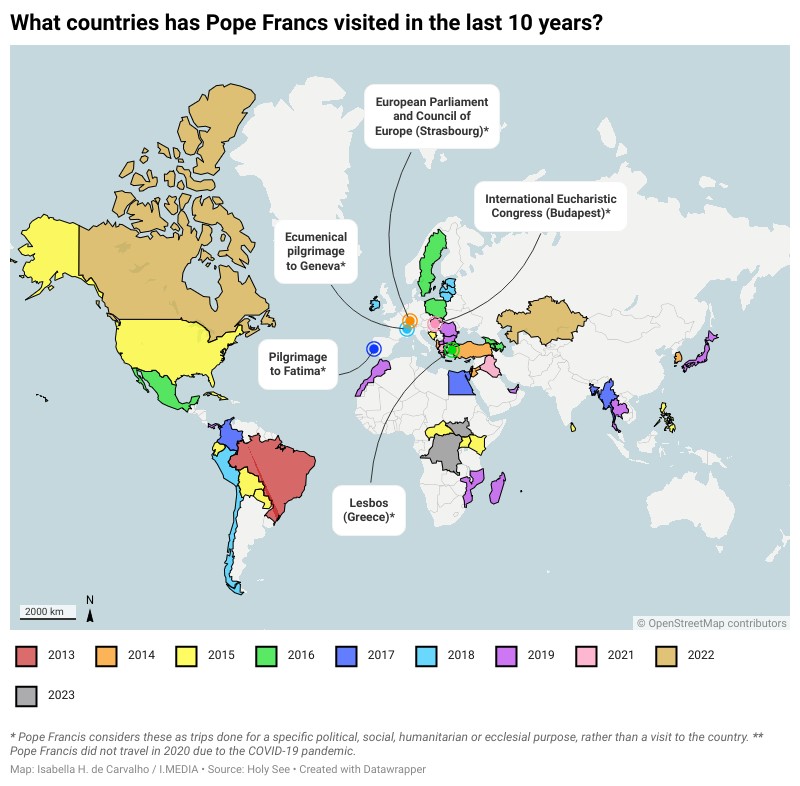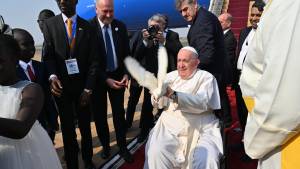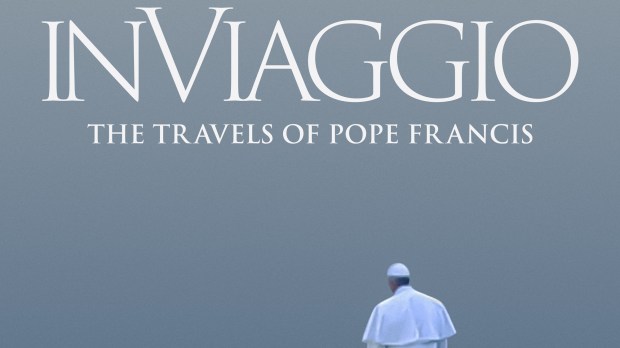Of all the remarkable footage in the new documentary In Viaggio, there is one recurring image that particularly resonates, one that says something about the papacy perhaps more than anything else in the film. The camera is placed behind Pope Francis, looking over his slightly bent shoulders as he stands in the Popemobile, the vehicle slowly making its way through streets thronged with cheering crowds. On continent after continent, the motif repeats itself, with hundreds, sometimes thousands pressing in towards the Pope, their faces upturned towards him in a mixture of joy, celebration, and hope.
It might be this very image the film’s director, award winning documentarian Gianfranco Rosi, had in mind when he explained to Variety, “As a layman, as a non-believer and as an agnostic, I find that [Pope Francis] is the only man who can speak to everyone, believers and non-believers, in a universal language, and that knows how to speak at different levels.”
What In Viaggio appears to acknowledge is that while the Pope may be the chief pastor of the Catholic Church, the voice of whomever sits in the Chair of Peter extends far beyond the walls of Vatican City.
And it is indeed the Pope’s voice which is the driving force in the film. Given unprecedented access to the Pontiff, Rosi and his crew travel with Francis as he visits 53 countries over a nine-year period. Unlike other similar documentaries, though, there is little to no narration for these journeys. Instead, Rosi simply lets the cameras roll as the Pope speaks, sometimes to large audiences, but at other times to lone individuals seeking answers or comfort from someone they feel might offer both.

Topic-driven
This is not to say that Rosi’s own voice is not “heard” throughout the film. Out of the hundreds of hours of documentary footage the director reportedly collected, he has admittedly chosen to showcase only those moments where Francis addresses a topic the filmmaker already holds close to his heart. For example, the film starts with audio from a frightened voice begging the Italian Coast Guard for help as the small boat he and 250 other migrants are aboard sinks into the Mediterranean. It then cuts to Pope Francis addressing the tragedy, reiterating his oft-repeated call for countries to be more welcoming to migrants and refugees.
This is the basic structure of the movie. Historical photographs of the indigenous people of Canada are followed by footage of Francis offering apologies for any role the Church played in the abuse and forced assimilation of that people. Scenes from the African island of Madagascar, one of the most impoverished countries in the world, are followed by video of the Pope meeting with The Akamasoa Association, praising the humanitarian organization for upholding the dignity of the poor. Images of the devastation of warfare are followed by clips from Francis’ address to the United States Congress, wherein he scolds the assemblage for their part in supporting a military-industrial complex profiting from money drenched in the blood of war.
These issues and more are discussed. The film covers a surprisingly good amount of philosophical territory given its relatively short 80-minute running time. However, given Rosi’s own admission that he cherry-picked which topics to include based on his own interests, the film obviously does not depict the totality of the Pontiff’s thoughts on every conceivable subject. There is nothing inherently dishonest in the filmmaker’s approach, as the issues given focus are certainly ones close to Francis’ heart, but some may find the absence of discussion on certain topics a bit disappointing.
Fortunately, the movie is not just about current issues. Scattered betwixt and between the topic-driven set pieces are some quieter interludes in which Rosi manages to capture the Pope in rare instances of solitude. Some of these find the Pontiff deep in prayer, while others simply show an exhausted man trying to snatch a few moments of rest from his grueling itinerary. Perhaps the most telling image is one with an odd combination of sadness and inspiration. An elderly Francis sits alone, his entourage having just left the room. After a moment, he struggles to lift himself from his chair. The obviously painful process complete, he begins the slow walk to his next scheduled event. There are people, Catholic and otherwise, who want to, nay, need to see the Pope. There is work to be done. The journey must continue.
In Viaggio releases to theaters on March 27 and video on demand on March 31. Get tickets or find out more here.


